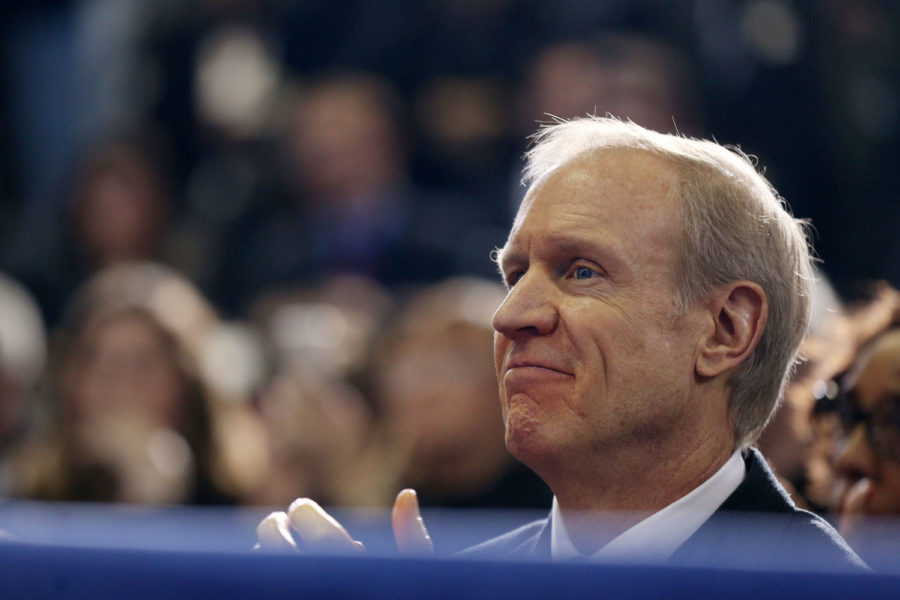Illinois state budget crisis at a glance: Revenue down, spending up, no one in control and no end in sight
February 16, 2016
Gov. Bruce Rauner delivers his 2016 Budget Address on Wednesday. He’s in an awkward situation: The Budget Address is intended as a preview of the Illinois state budget for fiscal year 2017, which starts July 1. State government has yet to adopt a budget for FY 2016, which started last July 1.
Making matters worse, without a budget to cut spending or raise more revenue, state government since July 1 has been spending far more than it’s taking in. Taxpayers will have to make up the difference whenever Rauner and the Democrat-controlled General Assembly pass a budget. The longer the current budget impasse continues, the bigger the hit on taxpayers will be. And with indications now that all sides are squeamish about voting on any tax increases before the Nov. 4 elections, we could be well into FY 2017 before we even begin to pay down the state’s debts of FY 2016.
Here’s a quick look at how things stand as Rauner delivers his second Budget Address without having signed his first budget.
Advertisement
The Illinois Constitution requires that the governor and General Assembly pass a budget by May 31. If they fail to do so, a three-fifths majority vote of the General Assembly is required for passage. As budget talks began in spring 2015, the state forecast $32 billion in revenue for FY 2016. Maintaining state services at FY 2015 levels would require $38 billion. Rauner proposed a budget containing heavy cuts and no tax increases to end FY 2016 with surplus of $505 million. Democrats passed a budget that ended the year with a deficit the administration estimated at $4 billion. Rauner vetoed all but one of the 20 budget bills (he signed legislation to fund elementary and secondary education, ensuring that schools statewide would open on time), saying he wouldn’t discuss the budget until Democrats pass some of the business and political reforms contained in his Illinois Turnaround agenda. Democrats say those reforms are not related to the budget. The two sides are deadlocked.
In theory, the Illinois Constitution says state government can’t spend money unless there is a balanced budget to authorize that spending. That means government should have all but shut down as of July 1, with most state employees not receiving paychecks as of that date. A non-functioning government would have placed heavy public pressure on Rauner and lawmakers to pass a budget.
In practice, Comptroller Leslie Geissler Munger, backed by the administration and unions, sought and received a court order authorizing payment of state employees for the duration of the budget impasse. Court orders and other mechanisms have forced the state to continue roughly 90 percent of its FY 2015 spending. Thus the state is on pace to overspend by $4.6 billion by June 30. The state could end the year with more than $9 billion in unpaid bills.
Illinois public colleges and universities have received no funding since July 1. Chicago State University has said it may not be able to operate through next month without state funding. Eastern Illinois University has taken austerity measures that included the layoffs of 200 non-faculty employees last week. Financial aid promised to 125,000 low-income college student can’t be delivered. Private agencies that provide human services to the disabled, sick and elderly are closing or reducing services because they no longer are being paid.
Advertisement









